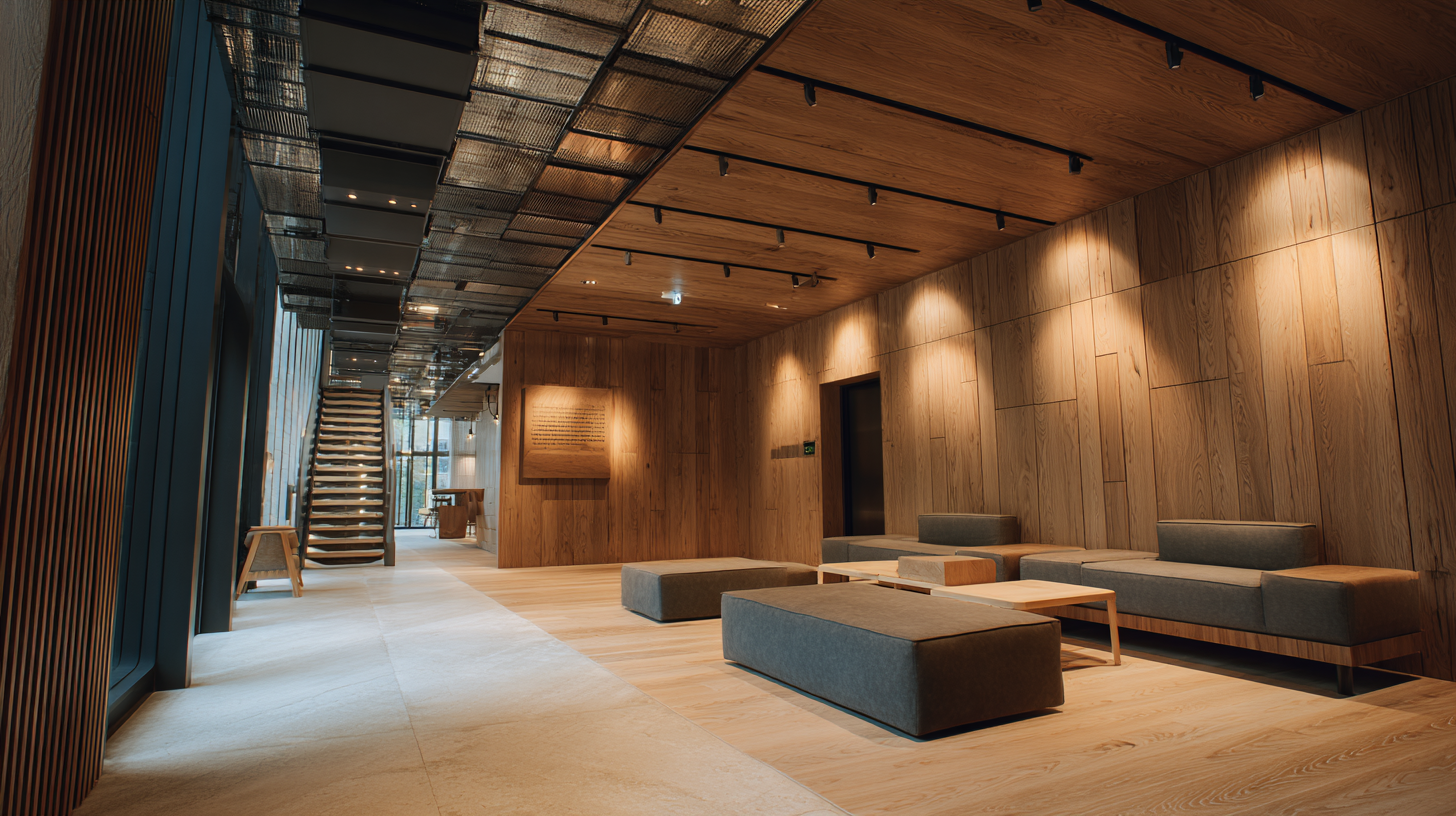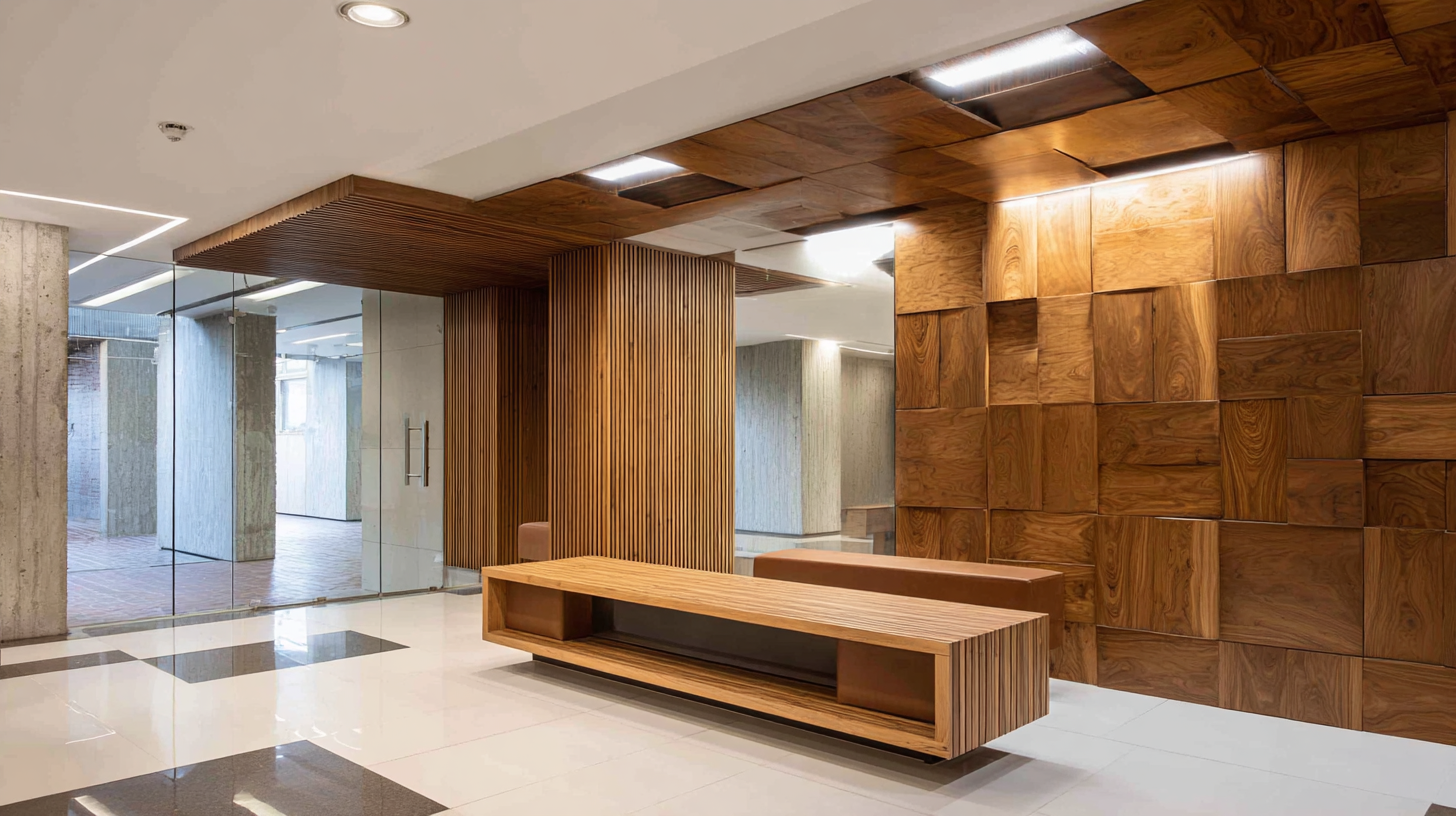Leave Your Message
In contemporary interior design, the choice of materials can significantly influence the overall aesthetic and ambiance of a space. Among the multitude of options available, Timber Veneer Wall Panels stand out as a compelling choice for both functionality and style. These panels not only provide the warmth and beauty of natural wood but also offer practical benefits such as durability, ease of installation, and versatility in design. As modern spaces increasingly focus on sustainability and eco-friendly materials, Timber Veneer Wall Panels emerge as a sustainable alternative, allowing designers and homeowners to create stunning environments that resonate with nature. In this exploration, we delve into the myriad advantages of incorporating Timber Veneer Wall Panels into modern interiors, highlighting how they can transform your space into a sanctuary of elegance and comfort.

 Timber veneer wall panels are rapidly gaining popularity in modern interior design due to their ability to blend natural aesthetics with contemporary style. The allure of timber lies in its warmth and authenticity, which can transform any space into a soothing retreat. According to the "Trends in Interior Design 2023" report published by the National Association of Home Builders, nearly 70% of homeowners cite natural materials as key to creating a welcoming atmosphere in their homes. This trend reflects a growing desire for environments that resonate with nature, making timber veneer an ideal choice for modern interiors.
Timber veneer wall panels are rapidly gaining popularity in modern interior design due to their ability to blend natural aesthetics with contemporary style. The allure of timber lies in its warmth and authenticity, which can transform any space into a soothing retreat. According to the "Trends in Interior Design 2023" report published by the National Association of Home Builders, nearly 70% of homeowners cite natural materials as key to creating a welcoming atmosphere in their homes. This trend reflects a growing desire for environments that resonate with nature, making timber veneer an ideal choice for modern interiors.
When incorporating timber veneer panels, consider the scale and placement of your panels. Large, expansive wall treatments can serve as stunning focal points, while smaller sections can accentuate architectural features. Adding contrasting materials like metal or glass can further enhance the natural beauty of the veneer. One tip is to use lighter tones for smaller rooms to create an illusion of space, as lighter veneers can reflect more light.
Also, maintenance is crucial for preserving the beauty of timber veneer. Regular dusting and occasional conditioning can prevent the wood from drying out or fading. According to the Wood Products Council, properly maintained wood finishes can last up to 25 years or longer, making timber veneer not only an aesthetically pleasing choice but also a practical one.
Timber veneer wall panels are increasingly becoming a popular choice in modern design, not only for their aesthetic appeal but also for their sustainable qualities. As environmental concerns rise, designers are looking for materials that minimize ecological footprints. Timber veneer, sourced from responsibly managed forests, provides a sustainable alternative to solid wood, requiring significantly less timber without compromising on beauty or functionality. By using thin slices of wood, this material optimally utilizes resources, while still offering the warmth and character of natural wood surfaces.
Moreover, timber veneer contributes to improved indoor air quality compared to synthetic materials that often emit volatile organic compounds (VOCs). It is a biodegradable option that can be recycled at the end of its lifespan, making it a circular material that aligns with eco-friendly design principles. Incorporating timber veneer wall panels into modern spaces not only elevates the aesthetic but also supports a healthier environment, reflecting a growing trend among consumers and designers alike toward sustainability and eco-conscious choices in their living and working spaces.
Timber veneer wall panels have emerged as a transformative element in modern interior design, reflecting versatility that suits a multitude of styles and spaces. According to a report by Allied Market Research, the global wooden panels market is projected to reach $190 billion by 2025, highlighting the rising popularity of wood-based materials. Timber veneer, in particular, offers the warmth and richness of natural wood while being lightweight and easy to install, making it an ideal choice for both residential and commercial contexts.
The aesthetic adaptability of timber veneer wall panels allows designers to incorporate them seamlessly into various design schemes—from contemporary minimalist layouts to rustic charm. A study published in the Journal of Interior Design emphasized that wood elements can significantly improve the overall ambiance of a space, enhancing both visual appeal and acoustics. With a variety of species, textures, and finishes available, timber veneer caters to diverse tastes and functional requirements, thus proving to be a timeless component for anyone looking to elevate their environment.

Timber veneer wall panels are not just an aesthetic choice for modern spaces; they also offer significant acoustic benefits that can greatly enhance room sound quality. The natural properties of timber allow it to absorb sound, reducing noise levels and improving clarity within a space. This is particularly beneficial in environments such as
offices,
restaurants, and
homes where a pleasant auditory experience is paramount. By choosing timber veneer panels, designers can create a more inviting and peaceful atmosphere, ultimately improving the functionality of the room.
Moreover, the acoustic performance of timber veneer wall panels aligns with contemporary design trends that prioritize both form and function. In commercial settings, where considerations like seismic design and structural integrity are critical, these panels provide an elegant yet robust solution. The unique textures and finishes of timber veneer not only contribute to the aesthetic appeal but also help in managing sound propagation, ensuring that conversations and activities do not become disruptive. As such, timber veneer wall panels serve dual purposes, enhancing visual interest while improving the acoustic environment of any modern design.
Timber veneer wall panels are an excellent choice for modern design, and their cost-effectiveness makes them a smart investment for any budget-conscious homeowner or designer. Unlike solid wood, veneer panels use a thinner layer of real timber applied to a substrate, significantly reducing material costs while still providing the luxurious look and feel of authentic wood. This not only helps in maintaining aesthetic appeal but also offers a more sustainable option, as less wood is used in production.
When considering timber veneer for your space, keep in mind a few tips to maximize your investment. First, choose veneer panels that complement your existing decor, as the variety of finishes available allows for versatility in design. Second, consider the durability of the substrate; high-quality materials will ensure longevity and maintain the veneer’s appearance over time. Lastly, think about how the panels can be incorporated into your overall design scheme, whether as a statement wall or accents, enhancing both functionality and style without breaking the bank.
This chart illustrates the average cost per square meter of different wall panel options, highlighting the cost-effectiveness of investing in timber veneer panels compared to other materials.







